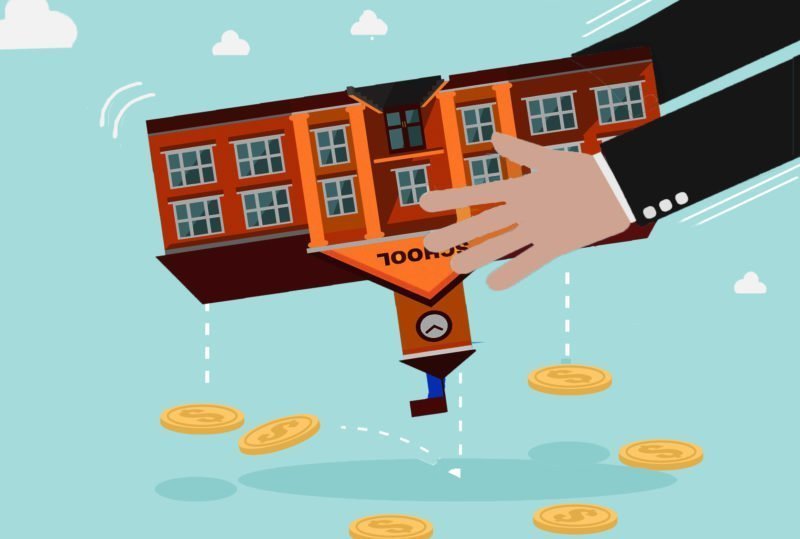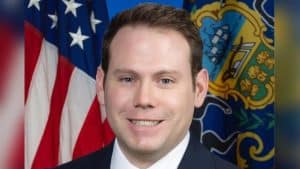Although a sizable number of Republican candidates in the 2022 midterm elections who were counting on school vouchers to be a winning issue—including Tudor Dixon in Michigan, Kari Lake in Arizona, and Tim Michels in Wisconsin—went down to defeat, school vouchers are not about to go away. Voucher advocates are instead changing the name and pushing for education savings accounts (ESAs).
ESAs are legal in around 10 states so far, but if this new idea for promoting school choice hasn’t already been proposed in your state, it may be appearing there soon. Here’s what education savings accounts are, how they work, and what policymakers and families in your state should consider before rushing headlong into adopting this idea.
What Are ESAs?
Education savings accounts are a kind of super-voucher. While traditional vouchers give parents a chunk of taxpayer money that they could use for tuition at the school of their choice, an ESA gives parents a chunk of taxpayer money that they can spend on private school tuition or a variety of other educational expenses.
Tennessee’s ESA law offers a typical list of eligible expenses that not only include private school tuition and fees but also textbooks, school uniforms, tutoring, transportation to and from school, computer software, tech devices, summer school tuition, and tuition and fees at a postsecondary school.
ESAs provide a wider range of choices—and a wider range of ways for vendors to get their hands on education tax dollars without having to open a whole school to get voucher money.
ESAs also provide political cover. Vouchers have frequently been rejected by voters, so voucher proponents, on Twitter and in legislative discussions, have opted not to use the label of “voucher” for ESAs. They may further try to sweeten the rebranding by using terms such as “education scholarship accounts” and “education freedom accounts.”
The money comes to parents by way of a company hired to handle these funds. Step Up for Students and ClassWallet are two examples of these “scholarship management” companies. These companies handle the actual disbursement of the monies, often through debit cards; they also take a cut of the funding.
Where Does ESA Money Come From?
Funding for an ESA program can come from several different paths.
One pathway is via tax credit programs that allow corporations and individuals to contribute directly to “scholarship” funding while getting a dollar-for-dollar tax credit. Former Education Secretary Betsy DeVos proposed this on a national scale with her failed Education Freedom Scholarships.
Proponents like to say that tax credit funding does not involve any government spending, which is technically correct because the money never touches government hands. But because it is a tax credit, it does cost the taxpayers. A million dollars in tax credit scholarships means $1 million of revenue the government does not get, leaving a hole that must be made up either by raising taxes or cutting other state and federal programs. Kentucky set up tax credit scholarships to fund its ESA program; the tax credit scholarship program was thrown out in December 2022 by the state’s supreme court for being “unconstitutional.”
Another pathway to ESA funding comes from new laws enacting “backpack funding,” where per-pupil funding that would have gone to the student’s home school district goes to the student’s ESA instead. This can be particularly damaging in states like Arizona, where the money is pulled from the student’s assigned district even if the student has always attended private school. In other words, the school’s operating revenue is reduced by the per-pupil funding, but its operating costs are reduced by zero dollars.
ESAs can also be funded by taking the money off the top of the state’s education budget, meaning the costs of the vouchers hit all school districts, whether they have students choosing vouchers or not.
In addition, a suggestion was made that pandemic relief funds be distributed via ESA-style programs (Oklahoma was one state that tried it).
GOP legislators have also tried to propose that federal funding intended for poor students or students with special needs, such as the Individuals with Disabilities Education Act (IDEA), be turned into school voucher programs, a particularly ironic proposal, as students usually give up their rights under IDEA when they move out of the public education system. This repurposing of federal funding for education will no doubt become part of the rhetoric used for ESA funding.
How Are Tax Dollars in ESA Spent?
Tracking how tax dollars are spent in ESA programs is difficult if not impossible because these programs have hardly any accountability.
ESAs, like vouchers, have proven to be a way to use public tax dollars to fund private religious schools. In fact, in states where voucher programs exist, vouchers primarily fund religious schools (particularly Catholic ones). While the separation of church and state, when it comes to education, is already being increasingly whittled away, ESAs, like vouchers, allow states to circumvent that wall entirely.
Further, there are few checks in place to ensure that ESA money is spent on legitimate education expenses. In Arizona, parents spent $700,000 of their ESA money on beauty supplies, clothes, and other questionable expenses. In Oklahoma, pandemic relief funds were disbursed ESA-style, and when news broke that about half a million dollars in funds had been used to buy things like Christmas trees, gaming consoles, and outdoor grills, the state passed the buck.
Ryan Walters, who was just elected as Oklahoma’s education chief, bragged that the private sector would be a “more efficient way” to handle the funds, and he gave ClassWallet freedom to administer the state’s ESA program. But ClassWallet has admitted that it has “neither responsibility for, nor authority to exercise programmatic decision making with respect to the program or its associated federal funds and did not have responsibility for grant compliance.” In other words, nobody is checking to see how the money is really spent.
In most ESA programs, parents can select from an official list of vendors. One might assume that such a list would include vendors that have been screened to make sure that they are qualified providers of high-quality materials and instruction, but one would be wrong. In many states, a vendor is included in the list after simply meeting some very basic requirements. Tennessee’s ESA program leaves oversight of education vendors largely up to the management of its private contractor. Arizona’s ESA program doesn’t even have a list of approved schools, vendors, or providers, leaving the destination of taxpayer funding up to the “discretion” of the account holder.
The argument is that free market forces will keep vendors in line and that parents’ ability to make choices will work better than government regulations. One might also argue that the Food and Drug Administration should be shut down and the market should be allowed to regulate food manufacturing behavior. If a company gets sloppy or cheap and starts producing poisoned food, the market will correct it. All we have to do is let some consumers be poisoned in the process.
Not only are taxpayers’ interests unguarded in ESA systems, but parent and student interests are unguarded as well. Parents have to navigate an unregulated marketplace, an asymmetrical market where sellers have far more information than buyers, and where marketing materials take the place of useful information.
What Risks Do ESAs Pose to Students and Families?
Whether school choice advocates are pushing vouchers or ESAs, they frequently fail to mention the most fundamental issue for students and their families—private schools do not have to admit anyone they don’t wish to admit, either by placing various barriers in the way (not offering transportation or meals) or by simply putting restrictions in place.
That was one of the takeaways from Carson v. Makin, a Supreme Court decision that declared that Maine must allow voucher money to go to religious private schools, even if they are clearly discriminatory. Many ESA laws include a sort of non-interference clause that declares that accepting voucher money does not make the school a state actor, and the state may in no way dictate to the school how it will operate. In other words, they may teach what they want and discriminate as they like, even if they accept taxpayer dollars. Students with special needs, as well as LGBTQIA+ students, find they may have far fewer “choice” options than others.
ESA programs fail to protect students in other important ways. Should a family run out of ESA money, or find that they’ve been bilked by a bad vendor, or even be dumped by a vendor that goes out of business midyear, there are no real protections for families of students. Some school choice advocates have suggested that this risk would be minimized by providing third-party consumer reviews via a service like Yelp. But generally, it’s assumed that the invisible hand of the market, wearing its caveat emptor ring, is supposed to do the job of quality oversight.
In one striking example, an ESA bill proposed in Utah in 2022 included a requirement that parents sign a statement that they “assume full financial responsibility for the education” of their child. That means if they run out of voucher money or get left high and dry by a bad vendor or find the vendor incompetent, they are on their own. Presumably, in such a situation, a student would have no recourse but to return to a public school, though that school might get zero funding for that student.
Do ESAs Improve Education Results?
Most importantly, study after study shows that voucher programs in all their forms do not foster excellence in education. ESAs are a newer creation and so have been studied less, but given that the ESA system has even fewer guardrails than traditional vouchers, there’s no reason to think that the educational results would be any better.
In any case, under ESA, poor educational outcomes would be the parents’ problem, and the solutions we’ve seen for this problem are grim.
For instance, some voucher proponents (including DeVos) suggest a low-cost use for vouchers would be microschools, in which a handful of students gather in someone’s home around a computer with some online lessons while an adult “coach” keeps an eye on things. It’s not anyone’s first choice for a great education, but if that’s what you can afford—well, enjoy your choice.
That is the heart of voucher programs, whether you call them vouchers or education savings accounts or freedom scholarship accounts; they get the government out of the school business and turn education into a commodity that is the responsibility of parents alone. In voucher world, the state hands you your debit card and washes its hands of you. “Enjoy your freedom, and good luck.” And if an excellent education is not readily available because the ESA money is inadequate or your child has special needs, and your local public school is struggling with reduced funding, well, that’s your problem.
It’s all about the three D’s—disrupt, defund, and dismantle. Call the voucher system whatever you would like, but it is about reducing education from a public good and shared societal responsibility to a simple consumer good.
This article was produced by Our Schools, a project of the Independent Media Institute.







